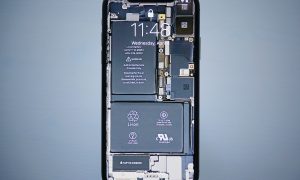There’s no denying the fact that Android and iOS pretty much dominate the whole smartphone, now with Windows out of the picture. But, if you’re among the narrow minority, who doesn’t like any of the two, this article is just for you.
iOS isn’t an open-source operating system, but Android is. Although some users don’t quite agree with it. It is because Android devices come with a fair share of bundled features. Hence, it can be termed as ‘proprietary’ in some cases.
The operating systems I will mention here are mostly of the same type i.e. they are open-source operating systems. So, let’s begin with the list of the alternative operating systems like Android and iOS. So scroll on and find the best one for you!
Best Alternative Operating Systems like Android and iOS
1. PostmarketOS
PostmarketOS or pmOS is an Alpine Linux package, that happens to be touch-optimized for use in smartphones as well. It doesn’t have any cap on the system requirements to load and run, which is the most unique feature. This allows you to load up pmOS on your older smartphones without any compatibility issues, unlike Android or iOS. This is the fundamental principle of Linux itself.
But there’s a catch. PostmarketOS is still in its early days of development. You won’t be able to use it with your regular smartphone just yet.
2. LineageOS
LineageOS is based on the open-source version of Android itself. It began as a derivative of CyanogenMod but has subsequently transitioned to an open-source operating system. You can install and run Google Services and Apps, as it doesn’t come with them due to licensing issues.
It offers a load of customizations and in-depth tweaks for the user. This allows you to have control over every bit of your phone on the software front.
3. Tizen Operating System
Tizen is an open-source operating system based on Linux, with a load o support from the tech giant Samsung. Because the project is endorsed by the Linux Foundation, it is commonly referred to as the official Linux mobile OS. As I mentioned before, it has strong backing from many tech companies like Samsung, and Intel, in addition to the Linux Foundation.
It also got some dirt because of some of its security flaws that surfaced later. It doesn’t seem to have a bright future unless it receives some love from the devs.
4. GrapheneOS
GrapheneOS is an open-source mobile operating system that prioritizes privacy. It is mainly focused on the research and development of technological security.
Android app compatibility is available on GrapheneOS. It also has its own set of apps with focusing on privacy and security. GrapheneOS may be thought of as a fortified version of Android minus the Google services. You’ll have to sideload the Google Apps yourself.
5. Kai OS
Kai OS is the third most prevalent mobile operating system in the world. Released back in 2017, it became very popular with a large number of phones running KaiOS in less than two years.
Unlike other mobile operating systems, it is not designed for high-end touch phones. Instead, it gives feature phones smartphone-like features. The feature phones are inexpensive, and the fact that they have smartphone-like capability makes them an attractive proposition for the masses. Kai OS is a variant of the now-defunct Firefox OS and is based on Linux. It isn’t entirely free and open source. The Linux Kernel changes are the only open source components. The rest is a closed source.
6. Sailfish OS
Even though Nokia chose to abandon the MeeGo OS project, a group of disgruntled Nokia employees didn’t come to terms. They created Sailfish OS to keep MeeGo alive.
It was planned to be maintained by the Linux Foundation as Tizen. However, over time Tizen has developed into its own entity and can no longer be considered a MeeGo derivative. The same can be said for Sailfish OS, whose fundamental operating system is built on the Mer project. And the Mer project itself is built on MeeGo progressions. Sailfish OS isn’t completely open-source, but it does have numerous commendable takes on privacy.
7. Plasma Mobile
Plasma Mobile isn’t really an operating system; it’s more of a graphical user interface. It is a mobile version of the Plasma desktop environment from KDE.
The setup procedure is also quite simple and well-guided. Plasma Mobile resembles any other operating system in appearance. Because this is a Linux-based system, you may not be able to install any Android services though. That might be a dealbreaker for some people, so keep that in mind.
8. UbuntuTouch
Ubuntu Phone was developed in collaboration with a number of device makers headed by Canonical. In February 2015, BQ, a Spanish company, became the first to release a device running Ubuntu Touch. Meizu, a Chinese company, quickly followed suit.
After two years and a handful of Ubuntu-based phones, Canonical decided to abandon its mobile OS. UBports, on the other hand, is still working to keep Ubuntu Touch alive. Ubuntu Touch receives various upgrades thanks to UBports’ work. Ubuntu Touch is compatible with a limited number of devices though.
9. CalyxOS
It’s another of those Android variants that are largely focused on tackling mobile device privacy problems. It is one of the greatest Google-free solutions, despite the fact that it only supports a few devices. It also gets system upgrades on a regular basis. It doesn’t have much going for it except that it comes close to Android usability minus the Google services and associated tracking.
10. PureOS
Ubuntu has always made efforts to streamline multi-device compatibility. This has other developers attempting to adopt the concept and run the same operating systems on smartphones and PCs.
Purism has its own forked version of Linux, PureOS. It is supposed to be a convergent solution to bring devices together and unite their usability. It will be used in Librem Smartphones as of now. As a result, it is both a device and an operating system bundle. With minor modifications, it will be able to operate on other devices as well.
Bottom Line
Whether you’re actually serious about adopting a new OS, or are doing it for fun, it is sure gonna be a great experience. It is justified as in Android of iOS, the brands cease to provide updates without any prior notification. It can make your device vulnerable to security threats and render your device pretty much unusable.
Keeping all of this in mind, you should keep your eye on an alternative, just in case. All of the OSs mentioned in this list of the Best Alternative Operating System like Android and iOS, are compatible with most devices and get regular updates in most cases.































































